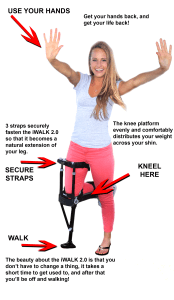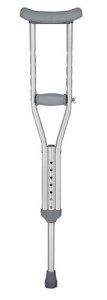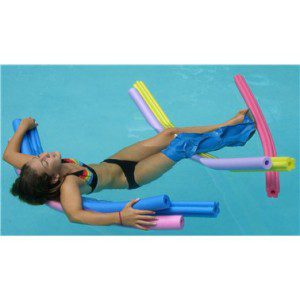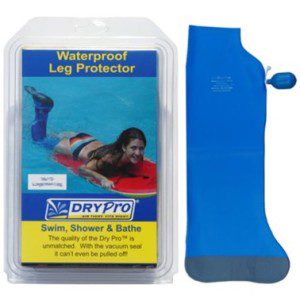Knee Scooters, Crutches, Walking Aids and Showering with a Cast
Knee Scooters – Often Better than Crutches
The products below are ones we recommend to our patients and they are also affiliate links so we may receive a small commission at no additional cost to you if you decide to make a purchase through our links. Please read our disclosure for more info.
If you have to be off your foot because of an injury or surgery knee scooters (also called knee walkers) are a great way to get around. Knee scooters allow you to maneuver around but still have the ability to use your hands while standing or walking. If you work in a small area we would suggest a scooter with swivel wheels. If you have to go a long way in a straight line would suggest wheels that do not swivel. We also recommend you get one with a basket.
Should You Purchase or Rent Knee Scooters?
Knee scooters can be purchased or rented. Most insurances do not pay for knee scooters, but rarely we do find one that covers them. If your insurance does cover knee walkers and you are in the Seattle area you can work with one of the companies listed below. Sometimes the companies will bill your insurance but more often you will have to submit the claim form to your insurance yourself.
If your insurance does not cover knee scooters you can purchase one for around $130 or you can rent them for $110 – $160 per month. If you are going to be using the scooter for more than a few weeks or might be having surgery on both feet it is probably worth it to purchase the knee walker.
If you wish to purchase one, there is a 4-star rated scooter here on Amazon (affiliate link). You may be able to submit this to your insurance. If your insurance does cover scooters, check with them before purchasing to see exactly what you will have to submit for payment. We cannot submit this claim for you.
Scooter rental locations in the Seattle area can be found at the bottom of this page.
iWalk Hands-Free Crutches
Another item that many of our patients have found useful when they must have one foot non-weightbearing is the iWalk Hands-free Crutch. The hands-free crutch allows to to essentially walk while keeping your foot non-weightbearing. These run about $150 and are not covered by any insurance that we know of. You can purchase hands-free crutch through amazon here (Affiliate link. We recommend you confirm return policy before purchasing).
iWalk is a simple idea. Standard crutches use your hands and arms to support your weight, while the iWalk medical crutch uses the uninjured parts of your leg to support your weight when you stand or walk. This allows you you have your hands completely free.
Like scooters, your hand are free. One big advantage that patients appreciate about the iWalk is that it is much easier to navigate stairs with the iWalk than with a scooter. The video below shows how easy it is to walk on flat ground and stairs with an iWalk.
The iWalk works best for fit people of normal body weight. If you are overweight we recommend that you use a knee scooter instead.
You can get the iWalk Hands-free Crutches here.
Video: iWalk Hands-free Crutches Demo and Instructions
Regular Crutches
Of course you can also use regular old-fashioned crutches. These are well-proven as a method to ambulate without bearing weight. The downside of course is that your hands are not free. If you are going to use regular crutches, watch the video below for detailed fitting and use instructions before using crutches.
If you wish to purchase crutches, we recommend the following crutches. Lumex Adult Crutches – available here. They are strong but very lightweight and are also very adjustable and works for those between 5’2″ and 5’10”.
If you are taller than 5’10”, then get these Lumex Tall Crutches – available here.
For kids, we recommend these Lumex Youth Crutches. All of the crutches run about $30 (Affiliate links)
Video: How to Fit and Use Crutches Safely
7 Tips on the Correct Use of Crutches for Foot Injuries
A variety of foot conditions and ankle problems may require the use of crutches during recovery. Conditions which may require non-weight bearing therapy include ankle sprains, foot fractures, shin splints, Achilles tendonitis, and even cases of stubborn plantar fasciitis. Of course, virtually all types of foot surgery will require non-weight bearing therapy during recovery.
Unfortunately, moving effectively and comfortably on crutches does not come naturally to most patients. Proper use of crutches requires advice, training and some practice. The instructions you receive from your doctor should never be ignored and you should always be careful when using crutches. Follow these seven tips on the correct use of crutches and watch the video below for detailed instruction on proper usage.
- Carefully follow all instruction and training you receive from your podiatrist.
- Avoid using crutches if you become dizzy or disoriented in any way.
- Keep your head up when using crutches, rather than watching your feet.
- Avoid putting weight on the affected foot.
- Stay away from slick surfaces. Crutches should never be used on wet, snowy, or icy surfaces.
- Ensure that your crutches have rubber tips and that they remain in place.
- Wear well-fitted shoes with low heels.
How to Keep Bandages Dry When Bathing After Foot Surgery
Following surgery it is critical to keep your bandages dry to help prevent infection. The Stay Dry Pro Pump is completely waterproof and will keep your bandages completely dry. This is the only device we have found that is truly waterproof. It uses a vacuum seal to prevent leakage.
The Pro-Pump fits snugly (but comfortably) around your leg to protect your casts and bandages during a shower, a bath or even a swim. The vacuum seal prevents it from slipping off and creates a waterproof seal.
Following foot surgery, most patients can wear the Half Leg Pro Pump. If your bandages extend above your knee, you will want the Full Leg Pro Pump.
Video: How to Shower with a Cast and / or Bandages on Your Foot
Seattle Area Knee Scooter Rentals:
7612 Aurora Ave N, Seattle, WA
206 365-7700
13000 Linden Ave N, Suite 102, Seattle, WA
206 362-0248
(Eastside, Edmonds, Seattle)
206-909-6579
Free insurance billing and free round trip shipping via UPS
(800) 889-0311
Bellevue Healthcare
425-451-2842








